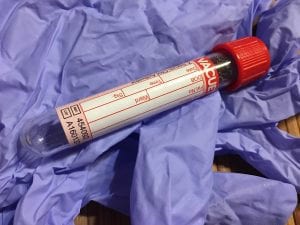According to a story from the US News, Teresa Tostenrud-Hoff, a woman from Kansas, was only 22 years old when she was first diagnosed with primary sclerosing cholangitis. Since then, she has endured multiple treatments and surgical operations in her struggle to survive against this dangerous illness.
Primary sclerosing cholangitis (PSC) is a long term, progressive disease that affects the liver and gallbladder. The bile ducts become inflamed and scarred over time. The scarring affects the ability of bile to flow to the intestines. Some people with this condition do not experience symptoms, but others experience dark urine, jaundice, fatty stool, itching, fatigue, and portal hypertension. As the disease progresses, it can lead to cirrhosis and ultimately liver failure. Primary sclerosing cholangitis also increases the risk of the patient developing cancer. The disease is also closely linked with inflammatory bowel disease; about 75% of patients have a bowel disease, often ulcerative colitis. The cause of primary sclerosing cholangitis is poorly understood. There is currently no approved treatment for the disease, with management focusing on relieving or reducing symptoms. A liver transplant may be necessary for people with severe disease, but the disease can return afterwards. To learn more about primary sclerosing cholangitis, click here.
For much of her life, Teresa had been dealing with digestive problems, causing her mom to change her diet. Nevertheless, she was often in and out of the doctor’s office growing up. Her conditioned worsened when she went to college, resulting in a procedure to remove her colon. When she was finally diagnosed with PSC, her doctor told her that she probably had only fifteen years left to live. By age 25, she was beginning to show the early signs of possible cancer, and her symptoms had worsened. However, she was able to get a liver transplant as well. Her body struggled to accept the new organ, meaning more medications for months to account for the complication.
The new liver did not help Teresa for long, and about two years later, her symptoms were starting to return. She would need another transplant. However, her past experiences with infection and a near death experience in a car crash delayed her getting back on the transplant list. Teresa’s family was beginning to accept the likelihood that she would not be around much longer. She eventually was offered another liver, although, at the time, it appeared that its previous user had a clotting disorder and syphilis, which was hardly ideal. However, doctors made it clear that it was her last chance to survive.
Despite these challenges, the latest transplant has been successful so far, and Teresa is grateful and determined to keep going every single day. She has a devoted husband, a son who is almost 8-years-old, and hopes to write a book about her experience, and the role of faith in her journey.








